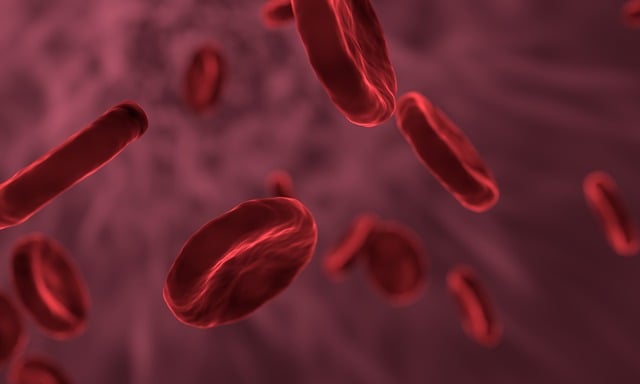Iron deficiency anemia, characterized by fatigue, weakness, pale skin, and respiratory issues, is diagnosable via a Standard Liver Blood Test (SLBT) UK. This test measures ferritin levels and helps rule out other causes of symptoms like fatigue. Key markers to watch include hemoglobin (Hb), haematocrit (Hct), and red blood cell (RBC) counts; low levels suggest iron deficiency. Consult a healthcare professional for proper treatment if SLBT results indicate anemia.
“Iron deficiency anemia, a common yet often overlooked health concern, affects millions globally. This condition arises from insufficient iron levels, crucial for red blood cell production. In the UK, a standard liver blood test (SLBT) emerges as a key diagnostic tool. This article delves into the intricacies of Iron Deficiency Anemia, exploring its symptoms and how SLBT results can provide vital insights. By understanding these aspects, individuals can effectively navigate their health with informed knowledge.”
- Understanding Iron Deficiency Anemia and its Symptoms
- The Role of Liver Blood Tests in Diagnosis
- Interpreting Results: What Do the Numbers Mean?
Understanding Iron Deficiency Anemia and its Symptoms
Iron deficiency anemia is a common blood disorder where the body doesn’t have enough healthy red blood cells to carry adequate oxygen to the body’s tissues. This can lead to various symptoms, including fatigue, weakness, pale skin, shortness of breath, dizziness, and headaches. It’s essential to recognize these signs early as they may indicate an underlying issue that requires attention. Iron is a crucial component of hemoglobin, the protein in red blood cells responsible for carrying oxygen throughout the body. When iron levels are low, the body cannot produce enough healthy red blood cells, resulting in anemia.
A Standard Liver Blood Test (SLBT) UK is often used as a diagnostic tool to identify iron deficiency anemia. This test measures the level of ferritin, a protein that stores iron in the body. Low ferritin levels can indicate iron deficiency, suggesting further investigation into the cause and appropriate treatment. If you suspect you have symptoms of iron deficiency anemia, consulting with a healthcare professional is advised to determine the best course of action.
The Role of Liver Blood Tests in Diagnosis
In addition to standard liver blood tests available in the UK, which primarily assess liver function and enzymes, these tests can also play a crucial role in diagnosing iron deficiency anemia. Liver health is indirectly linked to overall nutrient absorption, including iron. When a patient presents with symptoms suggestive of anemia, such as fatigue, pale skin, or shortness of breath, healthcare professionals may order a comprehensive metabolic panel (CMP), a standard liver blood test in the UK. This test provides valuable insights into various physiological systems, including the liver and kidneys.
The CMP measures levels of key enzymes like alanine aminotransferase (ALT) and aspartate aminotransferase (AST), which can be elevated in cases of liver damage or inflammation. While these enzymes are not direct indicators of iron deficiency, they help rule out other potential causes of anemia. If the liver blood test results appear abnormal, further investigation is required. In such instances, healthcare providers might suggest additional specialized tests to confirm iron deficiency anemia and identify any underlying liver conditions that may contribute to nutrient malabsorption.
Interpreting Results: What Do the Numbers Mean?
When interpreting results from a standard liver blood test in the UK, it’s important to understand what each number represents. The key markers to focus on are haemoglobin (Hb), haematocrit (Hct), and red blood cell (RBC) counts. Haemoglobin is a protein in red blood cells that carries oxygen around your body. A lower-than-normal Hb level can indicate iron deficiency, as iron is crucial for the production of healthy red blood cells. Haematocrit measures the percentage of red blood cells in your blood and is often used to confirm anaemia. If both Hb and Hct are low, it strongly suggests iron deficiency anaemia. Red blood cell count assesses the number of these cells in your blood. A decreased RBC count often accompanies anaemia, providing further evidence for a potential iron deficiency.
The reference ranges for these values can vary slightly between laboratories, but generally, levels below the lower end of normal for each metric are indicative of iron deficiency. For example, a Hb level below 120 g/L in women or 135 g/L in men might suggest anaemia, and further investigation is often warranted. It’s important to discuss these results with your healthcare provider who can interpret them in the context of your medical history and other test findings.
Iron deficiency anemia is a common yet treatable condition, and liver blood tests play a crucial role in its diagnosis. By understanding the symptoms and interpreting standard liver blood test results (UK), individuals can promptly address iron deficiencies. This knowledge empowers folks to take charge of their health and ensure optimal well-being. Remember that early detection through simple procedures like blood tests can make all the difference.
